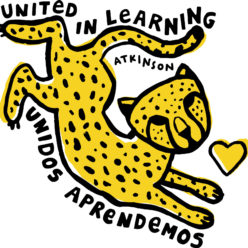Looking for Patterns in the Garden
Nikki Schulak – Atkinson garden representative
The study of patterns is ubiquitous in the early childhood classroom. We create patterns with drums, paint and clay. We notice patterns in numbers, nature, language and stories. There are patterns everywhere: in the walls and floors of our school, in the fabric of our shirts, in our hair and our bones. Patterns are pervasive even in our relationships.
 Children are natural pattern seekers. As teachers we help our students to further identify and define patterns in the world. Learning to see patterns helps us to build connections and similarities between things that might have previously been unremarkable.
Children are natural pattern seekers. As teachers we help our students to further identify and define patterns in the world. Learning to see patterns helps us to build connections and similarities between things that might have previously been unremarkable.
In late September, the kindergarteners ventured into the school garden to look for patterns and found them everywhere: in the arrangement of seeds in the giant head of a sunflower, in the tendrils of a pumpkin, in the leaf of a Dusty Miller, in the fronds of a fern. The children imitated the natural patterns we found with their bodies. They danced. They drew the patterns they saw and named them: spirals, explosions, branches, starbursts, packed hexagons, fractals.
In November, we sought patterns inside fruit. The children were impressed with the seeds of a pomegranate. They decided that the curving loops of a green pepper looked like the petals of a flower. They noticed the lines in a stalk of celery. We cut open an apple to find that it contained a star! We covered the cut fruit with paint and then covered paper with the painted shapes of the fruit. We made pictures with shapes and patterns.
As I was developing and teaching this unit, I became hyper-aware of patterns in my life; at the supermarket, while walking in the woods. What would I find to show the children? What would they find to show me? Seeking and sharing patterns is a way of communicating and translating our observations. Do you see what I see? Let me tell you: it looks like this.

On a windy day in late October, the children collected autumn leaves and, inspired by the work of Andy Goldsworthy, made leaf circles around the base of a Tulip tree. They collaborated to make a leaf pumpkin. The children declared themselves artists. We took pictures of their work before the leaves were blown away.
To see the lesson plans for “the Legacy Garden” and “Patterns in Nature” go to Atkinson Legacy Gardens
